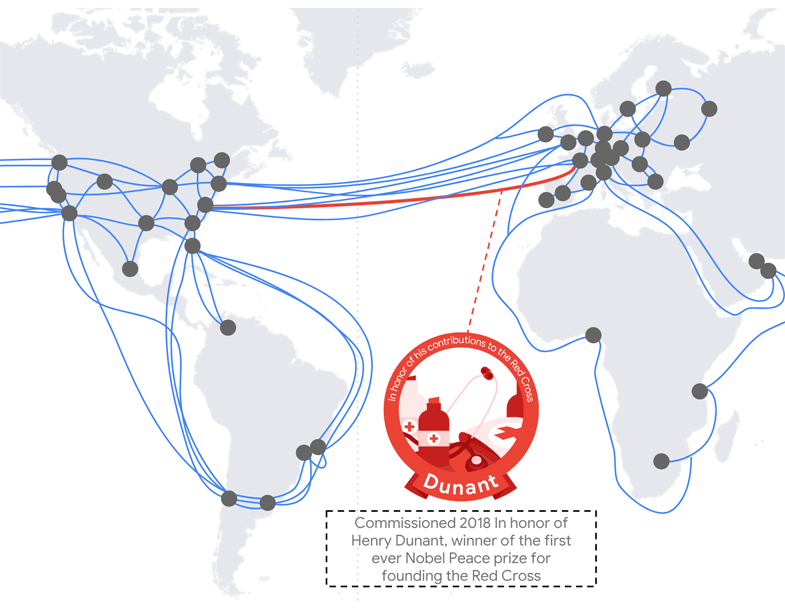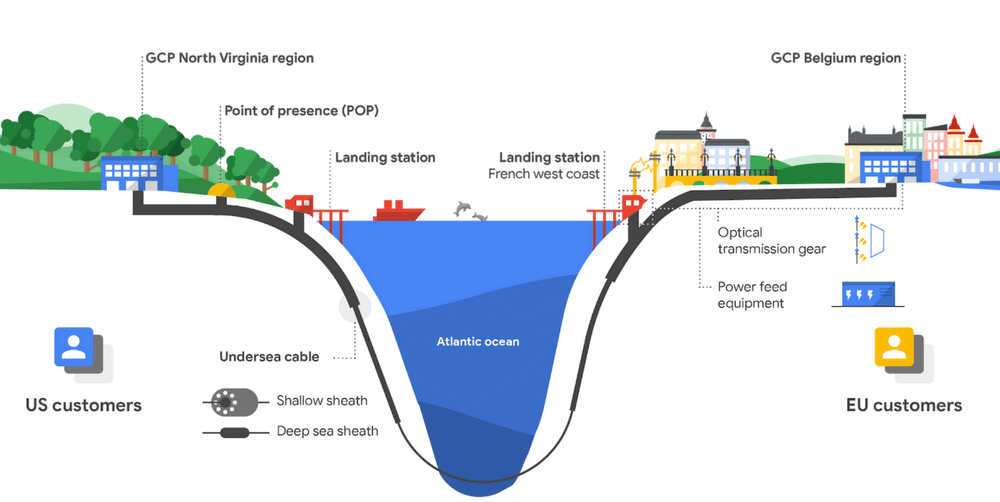Google is one of the largest internet companies to ever go online.
Because it provides more than just a search engine, the company and its parent Alphabet have grown significantly larger that they needs their own intercontinental cable.
It was back in 2018 that Google announced two private intercontinental undersea cables.
With the cable named 'Curie', Google became the first major non-telecommunication company to build its own after years of leasing or consortiums.
The second cable is named 'Dunant', and this time, the cable going live with speed of up to 250 terabits per second.
This record-breaking capacity is equivalent to transmitting the entire digitized Library of Congress, three times every second.

To achieve such speed, according to Google in a blog post, Dunant is the first intercontinental undersea cable that leverages space-division multiplexing (SDM) technology.
Traditional subsea cables are powered from the shore and rely on a dedicated set of pump lasers to amplify the optical signal for each fiber pair as data is transmitted through the length of the cable.
On the other hand. subsea cables using SDM technology allows pump lasers and associated optical components to be shared among multiple fiber pairs, while still working within the unique power constraints of the ocean floor.
"SDM increases cable capacity in a cost-effective manner with additional fiber pairs (twelve, rather than six or eight in traditional subsea cables) and power-optimized repeater designs," explained Google.
Dunant spans from Virginia Beach in the United States to the French west coast.
The cable is laid out particularly close to the North Virginia and Belgium GCP regions. Google Cloud commissioned this cable to increase the capacity of its cloud offering, and to also supplement one of the busiest routes on the internet.
Dunant is one among other subsea cables Google operates.
The intercontinental cables are meant to connect "far-flung continents along the ocean floor," wrote Google in a blog post back in 2020.
By privately funding the Dunant project, this allows Google to "plan effectively for the future capacity needs of our customers and users around the world, and add a layer of security beyond what’s available over the public internet," added Google.
Google has full control of routing and guaranteed bandwidth using Dunant. This is a privilege, considering that Google financed this cable on its own.
In the future, Google plans to continue investing in both private and consortium cables.

"Cables are often built to serve a very specific route," explained Jayne Stowell, Strategic Negotiator of Global Infrastructure at Google.
"When we build privately, we can choose this route based on what will provide the lowest latency for the largest segment of customers. In this case, we wanted connectivity across the Atlantic that was close to certain data centers."
In another blog post, Google said that after deployment and testing, the Dunant cable system is now “ready for service,” with Google saying that its partner SubCom was able to remain on “schedule despite the ongoing global pandemic.”